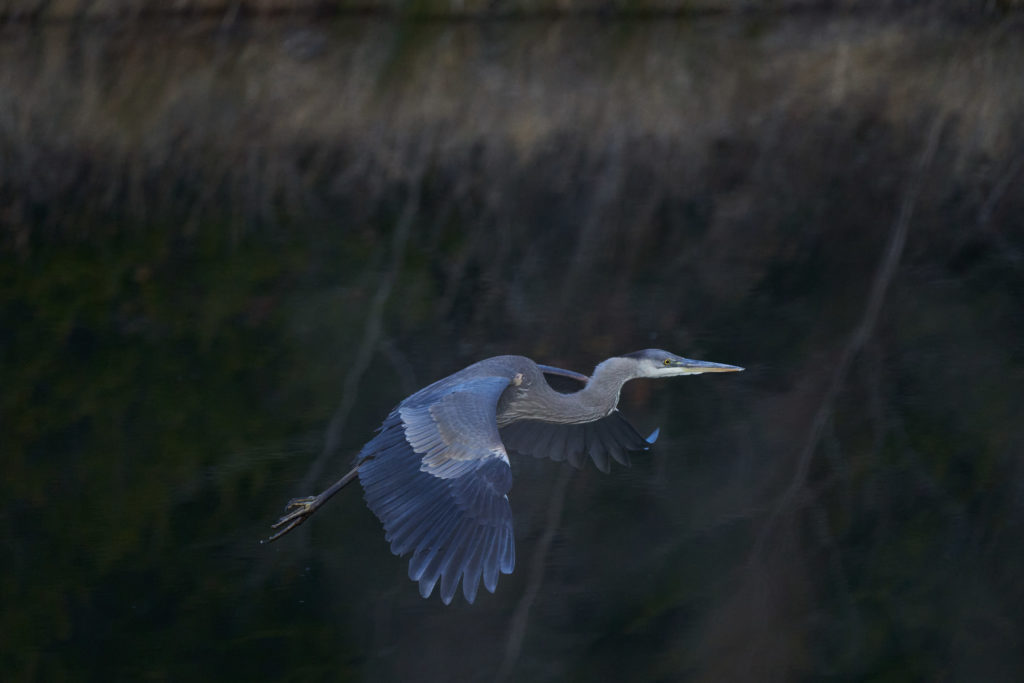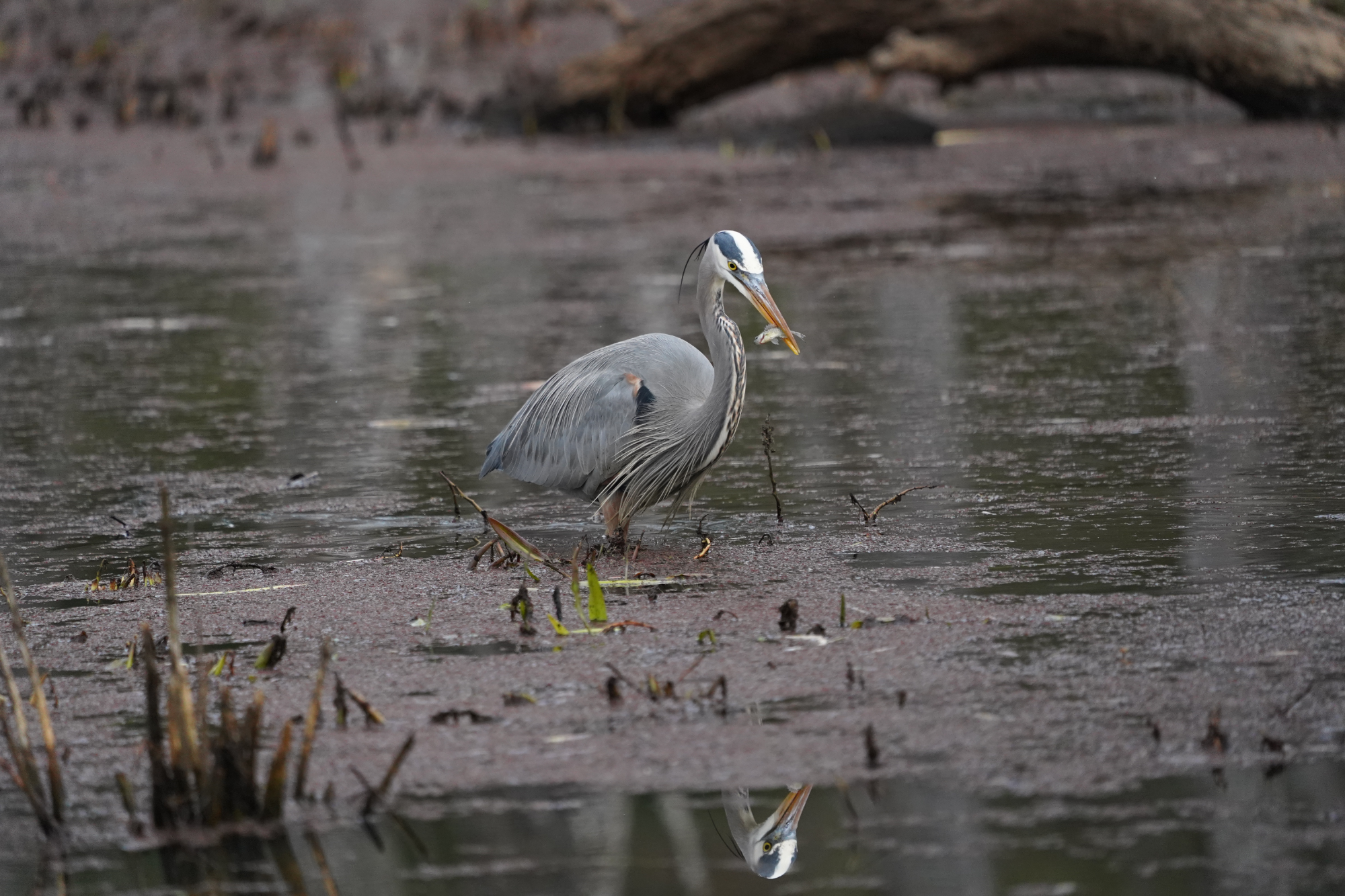On many morning walks with my dog, we pass by a pond. On the opposite side of the pond from the path, we often see a blue heron. Sometimes it will land on two branches that stick out over the water, while other times, it will be among the cattail plants. Sometimes as we go past, we will see it catch a fish.
I have enjoyed being able to watch the herons as they catch fish. As they prepare to catch their meal, they move with impressive speed. Another thing that we see on some of our nighttime walks is the heron fly over us. I often wonder where it is flying off to.
I used to wonder why they were called blue herons because to me, they always appeared more grey than blue. It wasn’t until I got a picture of one in flight that I understood why they are called blue herons. When they land somewhere, they appear mostly grey to me, but in the picture that I got of one in flight, you can see a lot of blue.

Herons can be found in wetlands, marshes, rivers, and other similar places. They live in many of the states in America and some of Canada. Those that live in northern environments during summer migrate south for the winter.
Blue herons nest around February to May. They lay two to six eggs. The young may start leaving the nest around six weeks after hatching.
Blue herons diet consists of fish, crawdad, crab, and sometimes small reptiles and rodents. They typically weigh around five to six pounds, are about four feet tall, and can have a wingspan of six feet.
